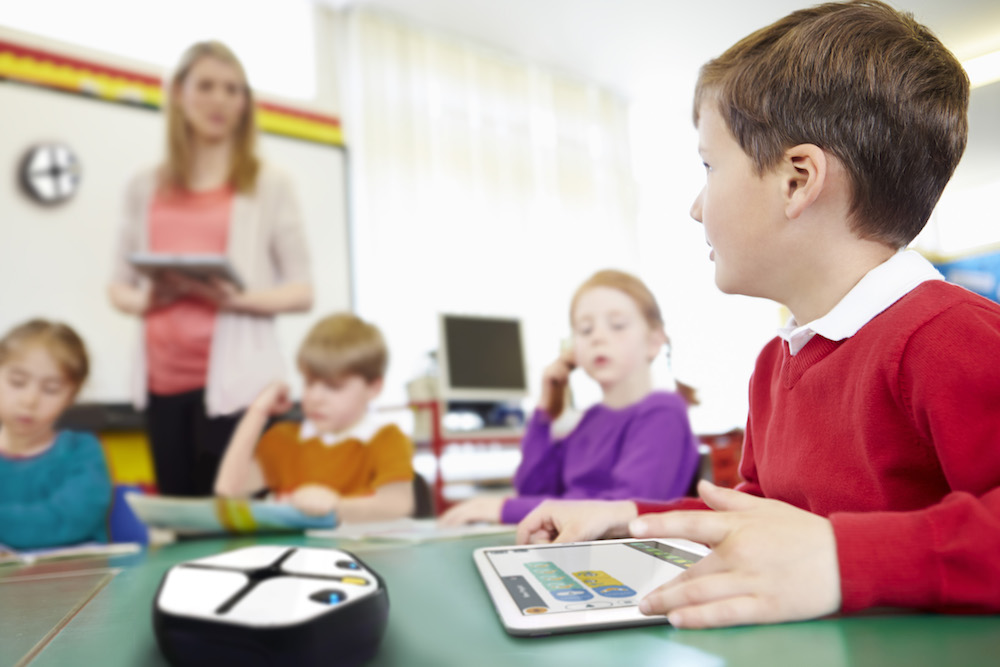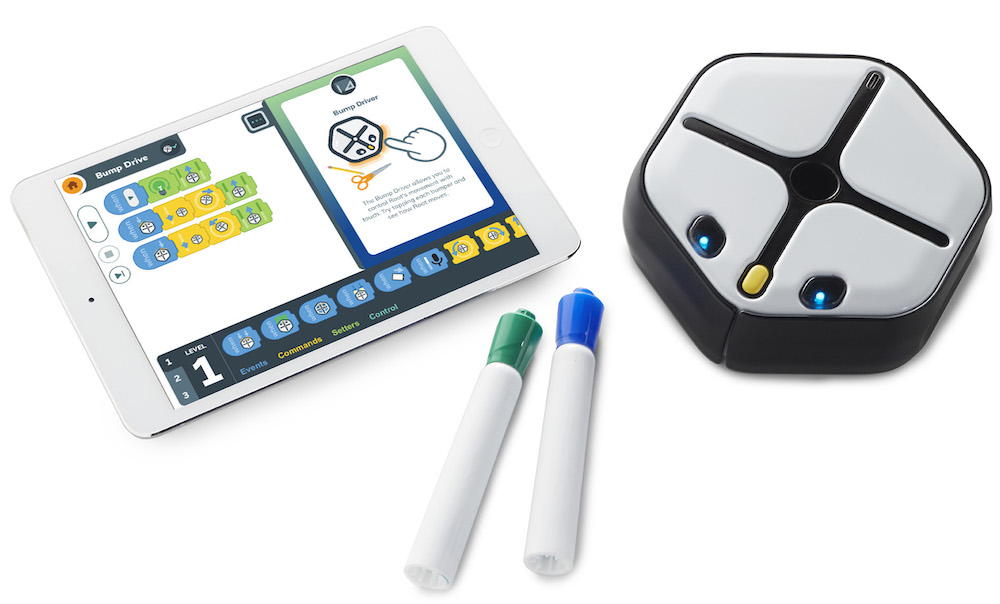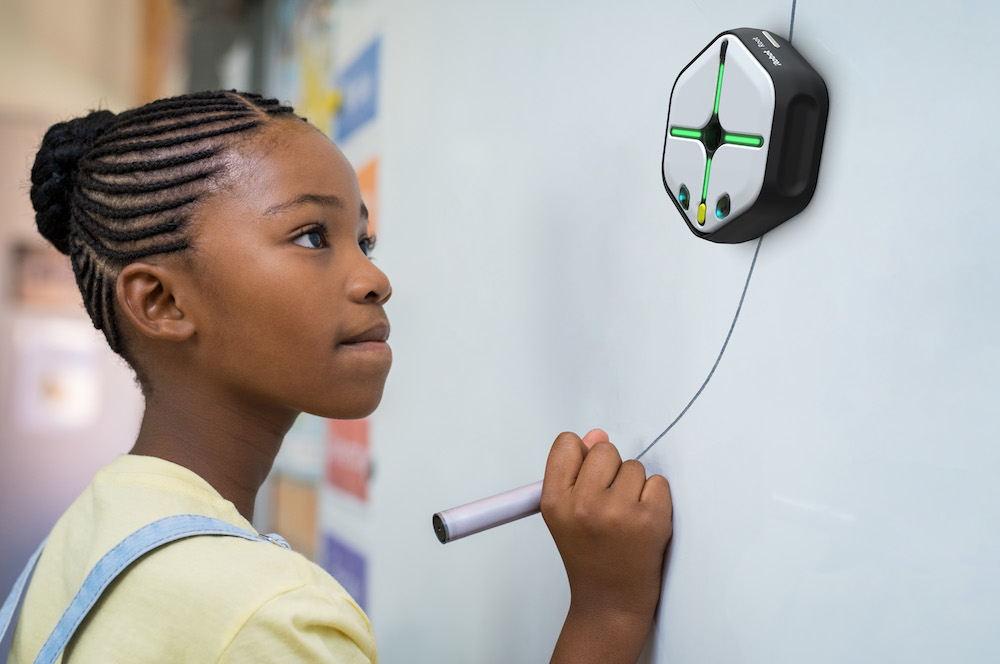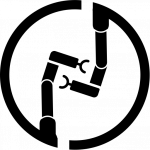
Students using iRobot’s Root coding robot. | Credit: iRobot
iRobot, maker of the popular Roomba robot vacuum, has acquired Root Robotics, an educational robotics startup founded in 2016. Financial details of the acquisition were not disclosed.
Cambridge, Mass.-based Root Robotics is the creator of Root, a robot designed to make learning to code easier for everyone. iRobot has long been passionate about science, technology, engineering, and mathematics (STEM) education, so the acquisition of Root Robotics is well-aligned with its efforts.
“This is a way to add rocket fuel to iRobot’s ability to impact STEM education throughout the world,” iRobot Co-Founder, Chairman, and CEO Colin Angle told The Robot Report during a meeting at his office last month. “Of all the ways iRobot can give back, helping inspire kids to pursue the world of STEM education is far and away the most impactful thing we can do — and it ties in with a personal passion.”
iRobot also knows Root Robotics Co-Founder and CEO Zivthan Dubrovsky quite well. Dubrovsky worked at iRobot from 2003-2009 as a program manager and senior product manager. Dubrovsky returns to iRobot as General Manager of Educational Robots.
“When I started at iRobot, there were maybe 60 employees. When we had an all-hands meeting for the home robot division, we all fit in a conference room,” Dubrovsky told The Robot Report. “In 2009, post-IPO, I saw the maturity of the company. I see my time there as the best time of my career.”
Meet iRobot Root
Now known as iRobot Root, the educational robot and its Square programming framework were developed by a research team at Harvard University’s Wyss Institute for Biologically Inspired Engineering. Dubrovsky led the team as Head of Robotics at the Wyss Institute from November 2011 to July 2017.
Root Robotics licensed the intellectual property behind Root from Harvard University. With the acquisition, iRobot now has the worldwide exclusive license for the underlying technology for Root, Dubrovsky said. iRobot Root is available now for $199.
Root is a two-wheeled, mobile platform that can operate on flat surfaces and vertical surfaces, such as a magnetic whiteboard in a classroom. When paired with the companion mobile app, users can instruct Root to draw artwork, scan colors, play music, respond to touch and sound, climb whiteboard walls, and explore the fundamentals of robotics.
Root is designed to transition users from simple drag-and-drop coding to more complex coding languages such as Python and JavaScript.
“The cool thing about Root is that is has three levels of coding. You can have young kids doing block-based coding. Then you move a slider, and you can code in Square. Then you move the slider again, and you’re coding in Python,” said Angle. “You can actually learn enough Python coding to get a job using this robot. It’s a very rich robot to control and drives you to create sophisticated programs that involve sensors and motion and decision trees. It’s not a lightweight robot.”
“Root is unlike a lot of education robots I’ve seen,” Angle said.
iRobot Root is available now for $199. | Credit: iRobot
Anatomy of an acquisition
During his “free time,” Angle enjoys mentoring entrepreneurs. And since he already knew Dubrovsky, he was more than happy to lend a helping hand to the Root Robotics founder. At the same time, iRobot was trying to figure out how to best scale its own STEM-related robot offerings. During Angle and Dubrovsky’s meetings, the opportunity to acquire Root Robotics presented itself.
“Root Robotics continued to make this robot more real. They focused this robot on coding, of which there’s a ridiculous shortage of talent in the United States,” said Angle. “In Massachusetts, for every college grad with an IT or Computer Science degree, there’s 16.5 jobs waiting for them.
“I tell anyone who asks me what their child should major in in college that it doesn’t matter what they’re interested in, learn to code. If you wanna learn to be an actress, learn to code. Learn to code and do what you want. That’s my generic advice to all parents who listen.”
Dubrovsky said Root Robotics considered multiple options to grow the company, but being acquired by iRobot made the most sense.
“You can raise a round of funding and find a licensing partner,” said Dubrovsky. “Other companies would go after a well-known toy or movie brand and apply their names to their products, or be acquired if there’s a good match. In some cases, there’s a temporary boost in revenue, and you can sell a bunch of products, but there’s no strategic acceleration of your mission.”
When asked whether there were business challenges Root Robotics couldn’t overcome, Dubrovsky replied: “To launch and build a consumer brand or a brand at all as a startup, your megaphone is only so big. iRobot is the best-known consumer robot brand in the world. Instantly, on Day 1, we have this gigantic megaphone that we never would’ve had access to.”
“Coding education is a global challenge, not just one that folks in Massachusetts face,” he said. “Parents and educators around the world who want to bring 21st century skills to the classroom need Root. To grow operational performance, to deliver a good solution around the world, it would’ve taken us decades to execute. iRobot can accelerate our mission and our business.”
In its announcement of the acquisition, iRobot said “Root Robotics is not expected to contribute materially to iRobot’s 2019 financial performance.” Angle did tell The Robot Report, however, he expects Root Robotics’ financial performance to surpass his modest expectations. “I wouldn’t rule out Root becoming something of real importance,” he said. “With the iRobot machine behind it and the need to help kids learn more about coding and the strength of the product, I think it’ll be quite strong. Ask me again in six months and I’ll give you a better answer.”

Root can operate on vertical surfaces, including such as a magnetic whiteboards. | Credit: iRobot
Root’s classroom reach
Dubrovsky said Root is in more than 500 schools in North America and many homes. One school in Iowa purchased 30 robots, and Kindercare will have deployed Root in half of its 1,600 learning centers across the U.S. by the end of 2019, he said.
“Root isn’t just a consumer product, it actually fits equally or better in schools. If you think about where technology typically lands in a school, it lands in a maker space or library. It’s hard for tech to make its way into mainstream classroom,” said Dubrovsky. “A school might have one maker space, but it’ll have 30-plus classrooms. If we make something as easy as a teacher turning on a whiteboard, something special can happen.”
Dubrovsky said he doesn’t measure success just by the number of Roots deployed; he also factors in how engaged Root users are.
“Between September 2018 and May 2019, over 1 million coding projects were run in our app,” he said. “The places it’s getting used in education and the parents who are using it as an educational tool, it’s sticking.”
What happens to iRobot’s Create platform?
iRobot already has an educational robot called Create. Based on the Roomba, Create was introduced in 2007, and the second-generation Create 2 was introduced in 2014. iRobot said the Create 2 programmable robot can be used “to grasp the fundamentals of robotics, computer science and engineering by programming behaviors, sounds and movements and attaching sensors, electronics, cameras, grippers and more.”
Angle told The Robot Report that Create isn’t going anywhere.
“Create is a different device and is more for advanced hobbyists,” he said. “If you want to build something on top of a platform, Create is your platform. You’re not going to build a large manipulator on top of Root.”
Evolution of iRobot product line
The Root acquisition is another change to iRobot’s product portfolio. In 2016, iRobot sold its defense and security division to Arlington Capital Partners for $45 million. That division, which became known as Endeavor Robotics, was recently acquired by FLIR for $382 million.
At the time, Angle stated that “after a thorough and deliberate process, we’ve concluded the sale of the [defense and security division] to Arlington Capital Partners will maximize shareholder value by allowing us to focus on our much larger home segment.” During his interview with The Robot Report, Angle said don’t expect “any defense or commercial-oriented products” from iRobot going forward.
iRobot also finally unveiled its Terra robot lawn mower this year. iRobot said the Terra robot lawn mower will be available this year in Germany and as a beta program in the U.S. iRobot’s Terra robot lawn mower was a much-anticipated announcement. There has been talk of an iRobot mower since at least 2006.
And iRobot just introduced its most sophisticated cleaning robots ever, the Roomba s9+ robot vacuum and Braava jet M6 robot mop. These robots act like a fleet of cleaning robots. Using iRobot’s Imprint Link Technology that allows the robots to communicate with each other. Both robots also feature the company’s mapping technology.
More than just the Roomba
“If you said, ‘Colin, 29 years after the founding of iRobot, you’re over $1 billion in sales; tell me what your company is doing,’ there’s no way I would’ve said 90% of our revenue is coming from vacuum cleaners. There’s so much more that robots can do,” Angle said. “I’d be blown away if you told me we’re the No. 1 selling vacuum cleaner in the U.S. I’d be super excited about the success of Roomba, but kind of bummed we haven’t been able to get the next steps under way to the same degree.”
“We’re deep in technologies required to understand the home and to do more useful work in the home,” he said. “How we can make the home better maintained, efficient, secure and healthy are some of our driving guidelines.”
“From a product evolution perspective, you’re seeing a big step in the type of performance and capability,” said Angle. “We have gone from an automated tool to an actual solution and from just Roomba to multiple product lines to drive towards more revenue diversification of the company.
“We have a lot of work to do. The potential of robotics is so broad, and we’re just about none of the way there to the true impact of robotics.”

